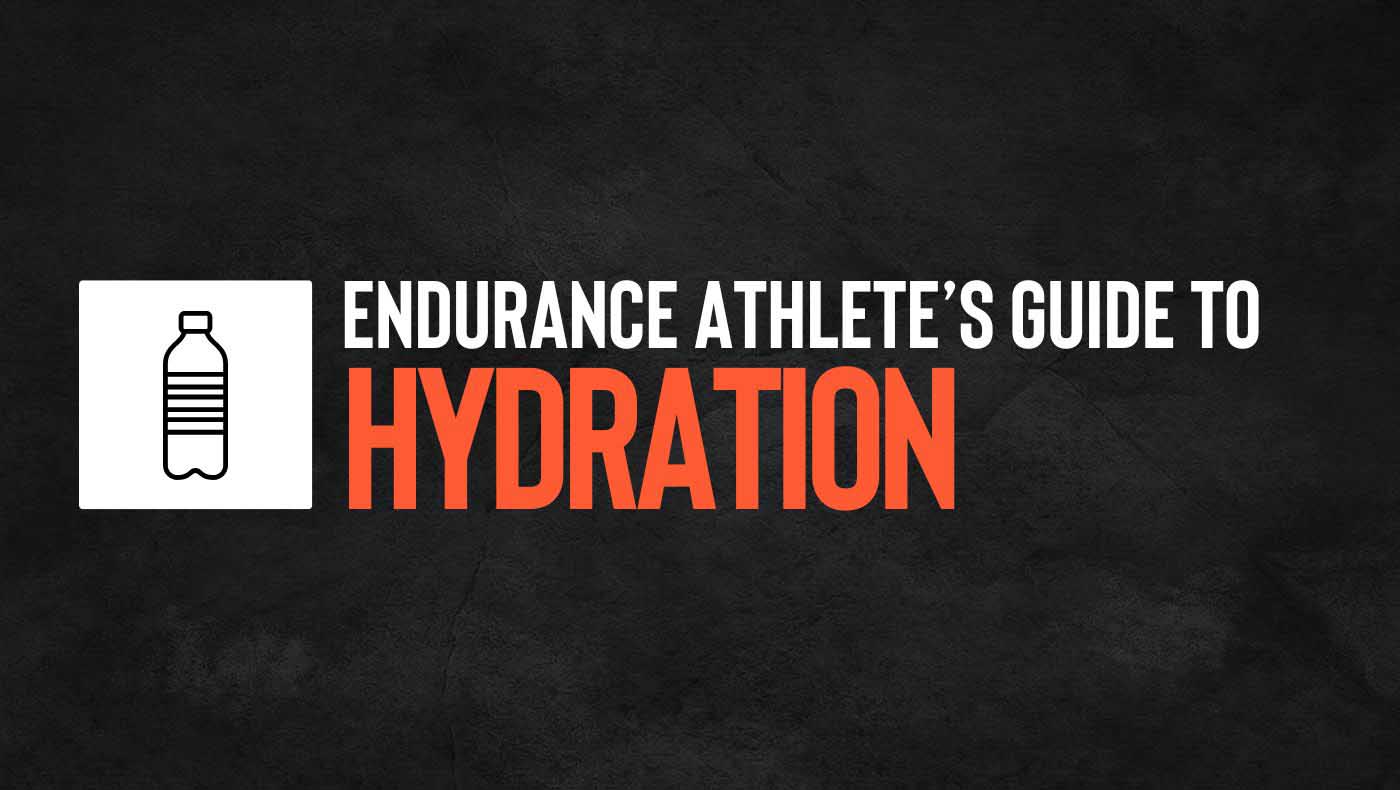
The Endurance Athlete's Guide to Hydration
Proper hydration means having the right amount and balance of fluids and minerals in your body, which is key to athletic performance. But maintaining hydration isn’t simple. Factors like your sweat rate, workout intensity, and environmental conditions such as heat and humidity all affect hydration.
While there’s no set formula that will work for all athletes, a successful hydration plan revolves around two core elements: fluids and electrolytes. This guide will help you create a personalized strategy to stay hydrated and perform at your best.

How Poor Hydration Impacts Endurance Performance
We all know that “dehydration is bad,” but not all athletes realize the extent of its harm. Not only does it put you at greater risk of heat stroke, but dehydration can kill your athletic performance in these ways:
- Reduced Blood Flow to Muscles: Dehydration means that less blood is sent to the muscles, which in turn means the muscles aren’t getting as much oxygen and nutrients.
- Impaired Sweating: When doing hard intervals, the body can produce huge amounts of heat. The body sweats to cool the body down, but it cannot do this efficiently when dehydrated, leading to a higher body temperature and impaired function.
- Glycogen Degradation: Poor hydration causes the body to go through muscle glycogen faster. Because muscles rely on glycogen for fuel during intense exercise, your ability to perform over long periods of time will suffer when dehydrated.
- Gut Distress: Intense exercise causes the body to divert blood from the gut to the muscles, which can lead to gut distress. Dehydration makes these gut symptoms worse and also makes the gut lining prone to damage.
- Increased Heart Rate: Heart rate increases 3-5 beats/minute for each 1% of body weight loss due to dehydration. This cardiovascular strain leads to earlier fatigue, decreased aerobic capacity, and poor thermoregulation.
Pro Fact: Exercise computers show your mechanical power output, which actually only accounts for ~23% of the energy your body is producing. Almost all the rest of the energy is released as heat. So, if your computer shows 1000W, you are actually producing 4400W of energy, with 3400W being lost as heat.
Too Much Fluid Is Also Poor Hydration
When talking about hydration, most people focus on dehydration from consuming inadequate amounts of fluids. However, consuming too much fluid is also bad because it can cause hyponatremia.
Also known as “water intoxication,” hyponatremia is a condition where too much fluid intake dilutes the concentration of electrolytes in your blood.
Symptoms of hyponatremia include:
- Feeling weak
- Mental confusion
- Fainting.
These symptoms are similar to those of dehydration, which can result in it being misdiagnosed in athletes. Since the treatment for dehydration is fluid intake, misdiagnosis could be dangerous. More athletes die from hyponatremia than dehydration.
How Much Fluids Should Endurance Athletes Consume?
In hot weather conditions, athletes can easily sweat out more than 1.5 liters per hour. Sweat rates in elite athletes have been known to reach 3 liters per hour.
It is almost impossible to replace this much fluid during intense activity, so a certain level of dehydration is inevitable. However, athletes should aim to keep fluid loss to a minimum.
Acceptable Fluid Loss:
- Less than 2% of body weight during competition
- Less than 4% of body weight during long training sessions at a moderate pace
For example: It would be acceptable for a 65 kg athlete to lose up to 1.3kg of fluids (1.3 liters) after a race.
Guidelines for Fluid Consumption during Exercise
As a general rule, athletes should consume:
- 500ml of water per hour in temperate conditions
- 250ml of water per hour in cold conditions
- 750ml of water per hour in hot conditions
Should You Time Your Fluid Intake?
Note that whether or not you should plan your water consumption (such as by setting a timer to remind yourself to drink) or drink to thirst is a contentious topic in the world of sports.
What is clear is that you should not follow the “drink as much water as possible” advice. Excessive fluid intake can result in exercise-associated hyponatremia (EAH). This “water intoxication” can be deadly, which is why Dr. Tim Podlogar recommends drinking to thirst and not forcing yourself to drink before you feel thirsty.
Calculate Sweat Rate
Sweat rates are highly individual, so the fluid intake guidelines above might not be a good hydration strategy for you. To get a more exact idea of how much fluids you should consume during exercise, you will need to calculate your sweat rate.
How to Perform a Sweat Rate Test
- Weigh yourself before an exercise session. Do this after your pre-exercise snack and drink. You should be naked when doing the weigh-in.
- Perform your exercise. Do not use the bathroom during the exercise. If you do, then you will have to perform the sweat rate test again another day.
- Track fluids ingested. Keep careful track of exactly how much fluids you consume during the exercise session.
- Weigh yourself after the session. Make sure you towel down and are naked for the weigh-in.
- Calculate sweat rate. Use the formula below.
Sweat Rate (liters/hour) = (Weight Loss + Fluid Consumed) ÷ Time Exercised
Your sweat rate will vary depending on factors like temperature, humidity, and workout activity, so it is important that you repeat the test under different conditions to give you a more accurate idea of your sweat rate. Your sweat rate also changes throughout the year, so you should repeat the test as close to an event as possible.
Pro Fact: We also lose fluids through respiration. These losses will be reflected in the test. So, calling it a “sweat rate test” isn’t completely accurate.
Should You Drink Your Sweat Rate?
It is unrealistic to drink the same amount of fluid you sweat per hour. Not only is it often impractical to carry this much water, but the rate of fluid absorption in the intestines during exercise is limited.
It varies, but research shows that most people can only absorb 400-800 ml per hour, and few can absorb more than 1 liter per hour.
Drinking large amounts of water during exercise can cause GI discomfort (though gut training can help with that). Instead:
Aim to consume ½ to ¾ of your sweat rate.
For example: If your sweat rate is 1 liter per hour, aim to consume 500 to 750ml of water per hour during exercise.
Remember that sweat rates are only estimations. There is no need to be strict and consume exact amounts of water.
Pre- and Post-Exercise Hydration Strategies
Hydration isn’t just about consuming fluids during exercise. Consuming fluids before exercise can help combat dehydration. Likewise, hydrating after exercise can help your body recover faster.
- Pre-Exercise Hydration: Consume 500ml of electrolyte fluids per hour in the 2-3 hours before the event.
- Post-Exercise Hydration: Drink fluids until you are back to your pre-exercise weight and your urine is a light, clear color.
Pro Fact: Ingesting sodium bicarbonate can also help with hydration. More on that here.

The Importance of Electrolytes for Hydration
Water is just one part of the hydration equation. The other is electrolytes. Electrolytes are minerals in bodily fluids.
When we consume water, the electrolytes direct it to where it is needed most, thus maintaining fluid levels and ensuring cells are hydrated so they can function properly.
If you consume water without electrolytes, the body may have difficulty retaining the right balance of water in cells. In severe cases, drinking water without electrolytes can result in hyponatremia.
Pro Fact: Electrolytes are minerals that get an electric charge when they enter bodily fluids. They are crucial for many body functions, such as transmitting nerve signals and keeping our hearts beating.
Which Electrolytes Should Athletes Consume?
There are many different minerals that act as electrolytes in the body. However, athletes should focus on consuming electrolytes that are actually lost during sweat.
These include: sodium chloride (salt), potassium, and calcium.
Consuming electrolytes in high amounts can result in gastrointestinal issues, which is why it is important that you only consume the ones your body loses during exercise.
Electrolyte Dosage
Electrolytes need to be consumed in proportion to fluid intake. For most people, these are good guidelines to follow:
- Sodium chloride: Aim for 700 to 800 mg per 500ml of fluids
- Potassium: Aim for 80 to 150 mg per 500 ml of fluids
- Calcium: Aim for ~10 mg per 500 ml of fluids
- Magnesium: Aim for ~1 mg per 500 ml of fluids
Pro Fact: Despite its popularity, magnesium is not one of these electrolytes and consuming sports drinks with lots of magnesium could result in GI issues. This is why the Nduranz Electrolyte Mix only contains a small amount of magnesium.
Salty Sweaters
Just like with sweat rates, electrolyte loss can be highly individual. People who are “salty sweaters” will lose more sodium chloride, and thus require higher doses of it in their fluids.
Signs you are a salty sweater:
- White, crusty streaks on your clothes after exercise
- Your sweat tastes very salty
- Your sweat stings if it gets in your eyes
- You crave salty foods after a workout
Ready to learn more? Read our guides to fueling and loading.
